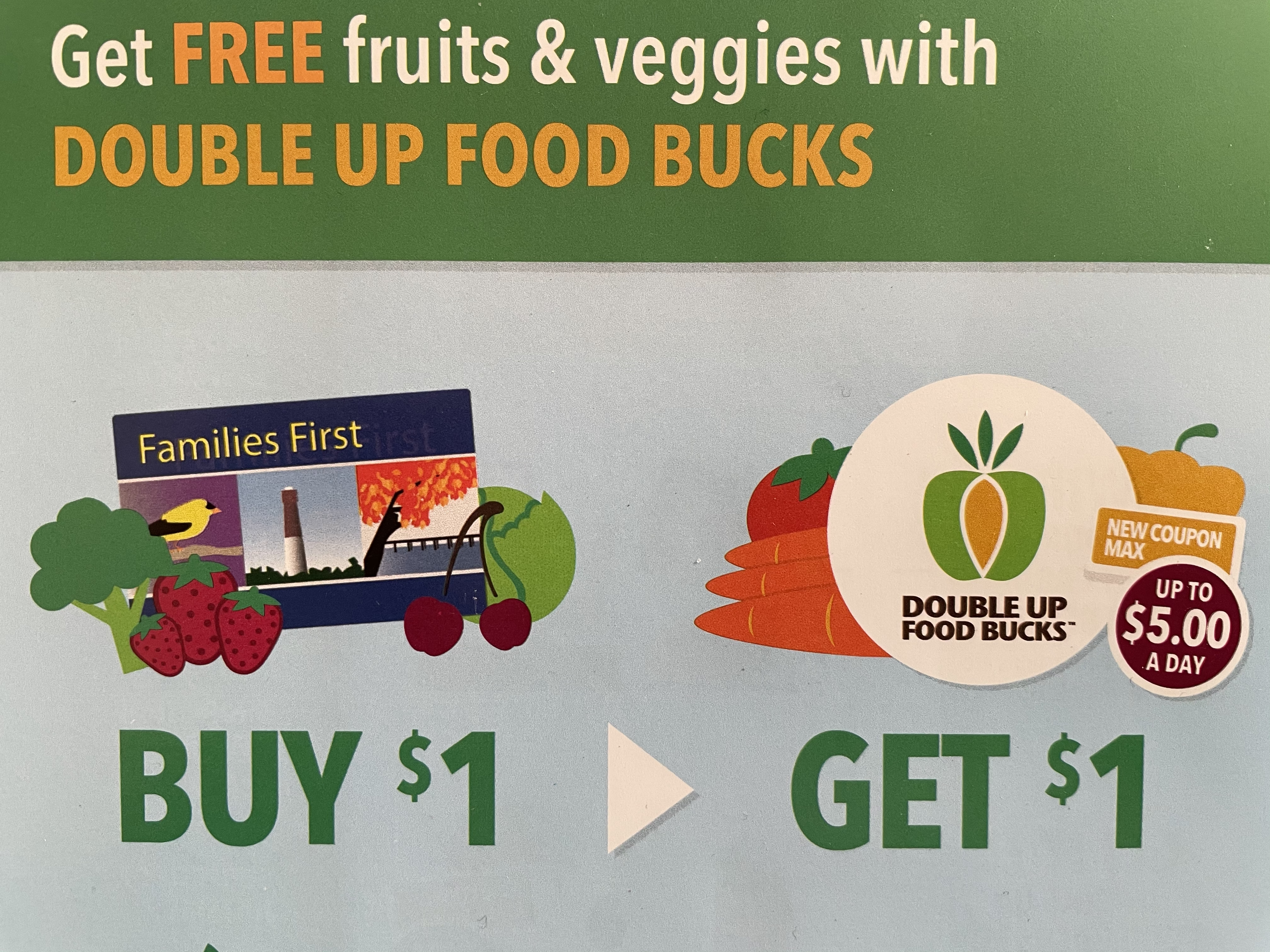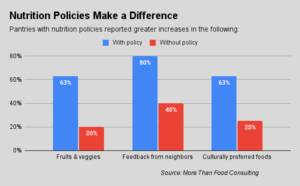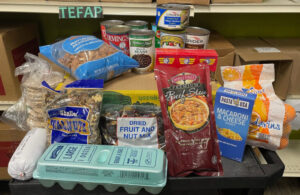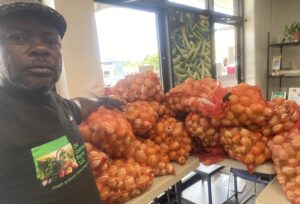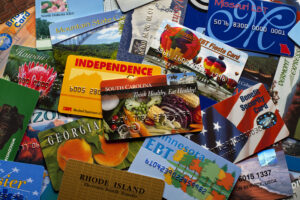Not many food banks actively promote nutrition incentive programs that make fresh produce more accessible to low-income families. But the ones that do are seeing results that go well beyond increased produce consumption in their communities.
These “Double Up Food Bucks” programs, which originated at farmers markets over 15 years ago, double the value of SNAP dollars when recipients spend them on fruits and vegetables. Policymakers like the idea of super-charging produce purchases because it pumps up local economies, and may also drive down health-care costs as people improve their diets.
Food banks are finding that they are well-positioned to help expand the incentive programs beyond farmers markets into places where they can have even more impact, such as grocery stores. As the programs grow, the food banks themselves are reaping benefits.
“It’s been a huge, huge game changer for us in terms of brand recognition, in terms of SNAP shoppers having awareness of our program, and even in terms of the support we receive from our food bank network and the state at large,” said Katie Delaney, who co-manages Fresh Access Bucks program at Feeding Florida.

Since taking over the program from Florida Organic Growers in 2018, Feeding Florida has tripled the number of participants in the program from 2,600 to more than 7,800; and nearly tripled transactions from 9,580 to over 26,000. Delaney credits the food bank’s reach into the community, as well as its ability to fundraise as instrumental to the growth.
Over the summer, Feeding Florida received a $5 million grant from the USDA, which was part of a $61.5 million pool being used to grow such programs. With grocery stores becoming the next frontier of Double Up programs, Feeding Florida is planning to use the funding to add three grocery outlets a year over four years, building upon the four grocery programs it already has.
“We’re looking at this as a pilot for retailers to see whether this is something we can replicate across the state,” said Delaney, adding, “We’re sharing our findings with other programs across the country. It’s a collective learning.”
Feeding Florida will also add to its core program, which currently serves 65 farmer’s markets, CSA programs and mobile markets, by adding five of those types of outlets per year for four years. At the end of four years, the food bank expects to be generating $3.4 million per year in fruit and vegetable purchases and assisting 189,000 Floridians through its new and existing outlets.
In Hawaii, the state’s main food bank, The Food Basket, is a pioneer in nutrition incentives, having started its DA BUX Double Up Food Bucks program in 2014. The program has steadily grown, thanks to federal support and donors, and is now available at 81 retail sites. By the end of 2020, 77% of SNAP households lived within shopping distance of a participating retailer.
The Food Basket also received $5 million this past summer from the USDA to expand its program. With the additional funding, it plans to remove the existing $20 daily cap on the double-up incentive so families can access even more produce, while also promoting the program through new outlets, such as community-supported agriculture shares and grocery stores.

The incentives will apply exclusively to Hawaii-grown produce, and will help to promote indigenous foods such as ulu, also known as breadfruit, and poi, a starchy vegetable. “We talk about nutrition security versus food security, making sure people are getting the best quality food possible,” said Kristin Frost Albrecht, Executive Director at The Food Basket. “That’s something that food banks aren’t actually very well known for.”
Another important aspect of the program is to provide an engine for economic growth in a state that has one of the highest unemployment rates, as well as food costs that are 82% higher than the national average. The food bank expects its efforts will increase revenues from Hawaii-grown produce by 400% by 2024 at each participating retailer.
Albrecht noted that every federal dollar spent locally becomes a $2.30 investment in the local economy. One farm, for example, needed four additional greenhouses to meet the added demand for produce.
The food bank is also seeking to help the state improve its disaster resilience. Albrecht noted that local farms became a lifeline for the food bank when supply chain challenges in 2020 delayed food imports that the state depends on. “We are disaster-prone in our state, so we have to really rely more on our own resources,” Albrecht said.
Though expanding grocery store participation is critical to scaling the programs, it is also the biggest challenge. The point-of-sale technology that powers cash registers doesn’t have an automatic way to double up SNAP dollars, and cashiers often do not know if shoppers are using an EBT card.
At Feeding Florida, it took three years for the organization to work with mid-sized grocery stores to build out a technology solution that automatically calculates the discount. But many smaller mom-and-pop stores and bodegas that lack sophisticated systems are still using paper vouchers and gift cards.
“The technology is one of the biggest challenges,” said Noah Fulmer, Director of National Partnerships at Fair Food Network, a national nonprofit based in Michigan that was the first in the nation to introduce Double Up Food Bucks programs in grocery stores.
“As these programs evolve and the technology is worked out, there will be the ability to more easily go to higher transaction volumes and have greater reach,” he said. “All of this takes time.”
The grocery industry is also joining efforts to ease implementation. In July, the National Grocers Association Foundation launched a workgroup to develop a common functionality that grocers can utilize to facilitate nutrition incentive programs.
“The evidence coming out shows that these programs definitely result in increased purchasing and consumption of fruit and vegetables,” said Amy Yaroch, Executive Director of the Gretchen Swanson Center for Nutrition.
The nonprofit has received USDA funding to lead a national center to support nutrition incentive programs. Known as the GusNIP NTAE Center, this entity is helping programs share best practices, solve challenges and gather data to demonstrate efficacy through the Nutrition Incentive Hub.
Food banks are viewed as a key partner of the overall effort. “By virtue of what food banks do, this is what they’ve been thinking about,” Yaroch said. “They are the venues that understand food-insecure people.” — Ambreen Ali
Ambreen Ali is a freelance writer and editor based in New Jersey. She was formerly an editor at SmartBrief and a congressional reporter at CQ Roll Call in Washington, D.C.
Like what you’re reading?
Support Food Bank News